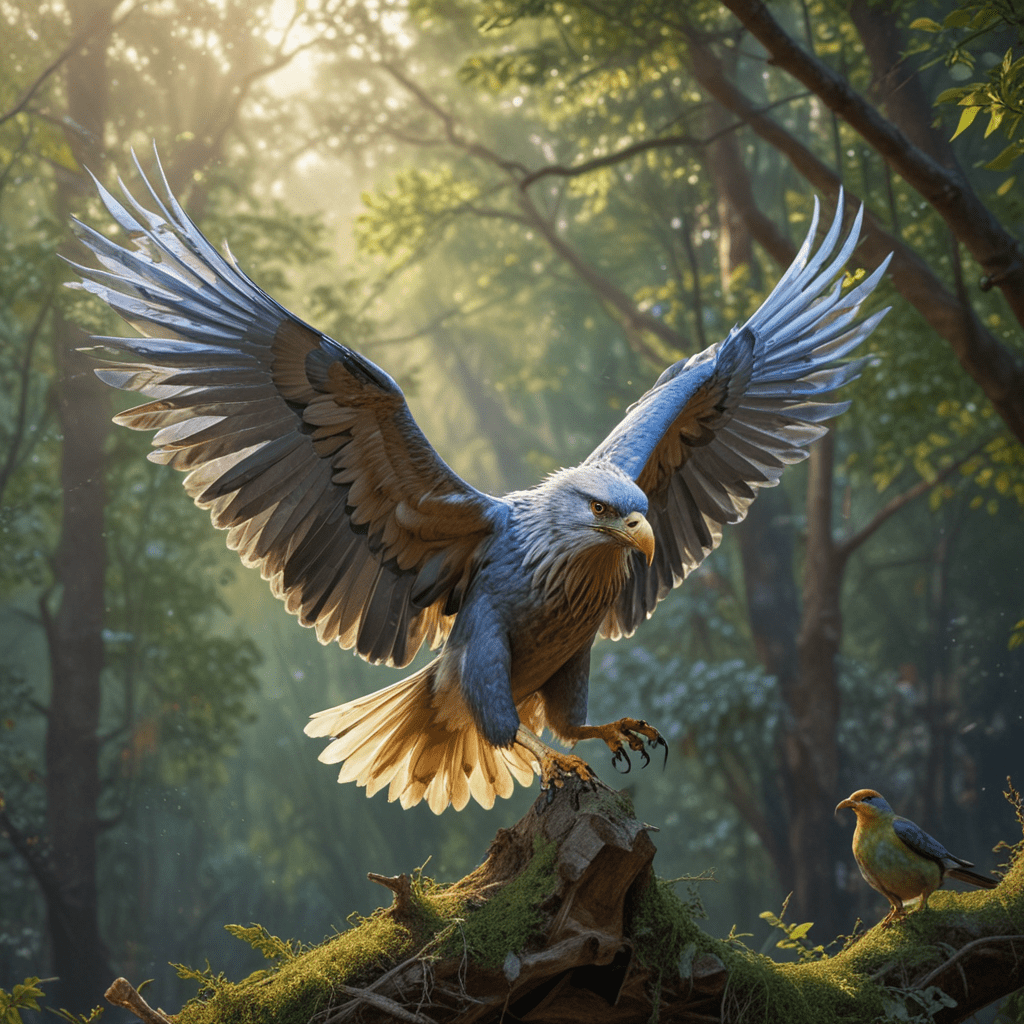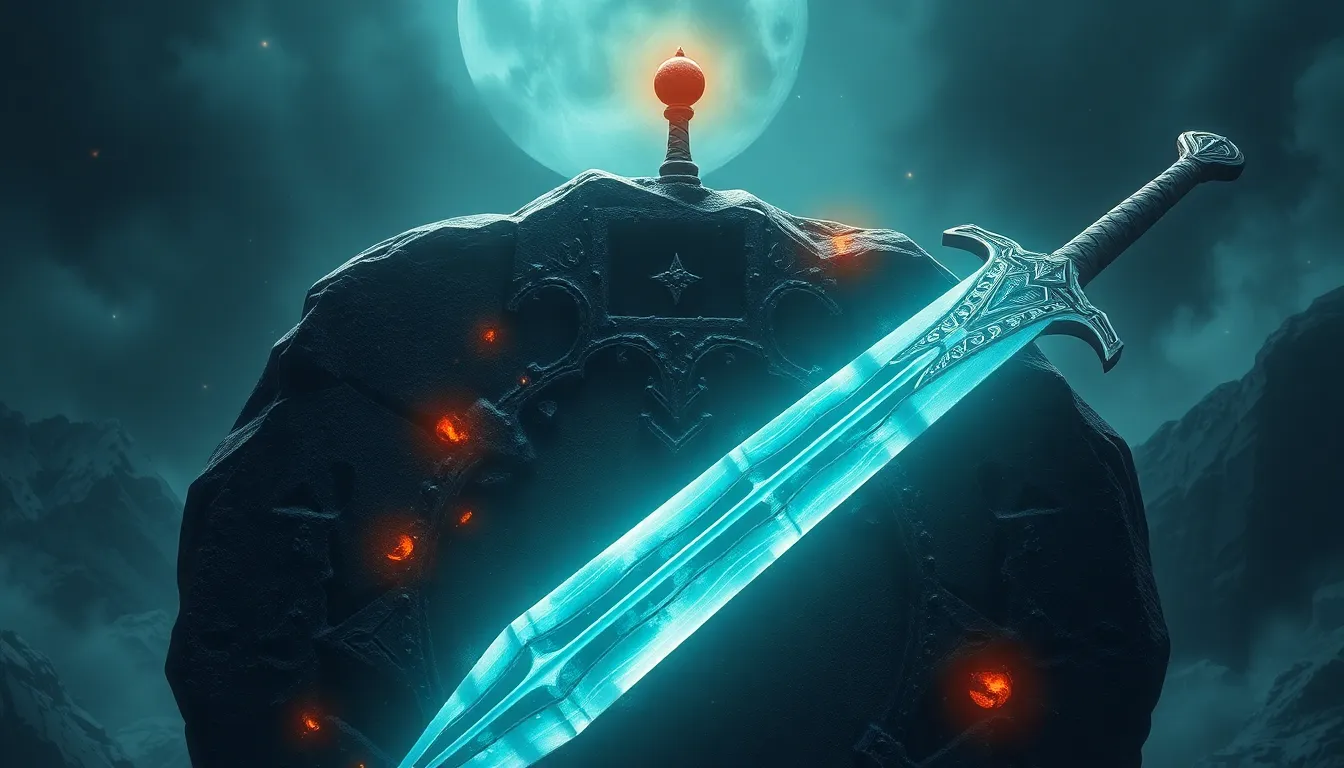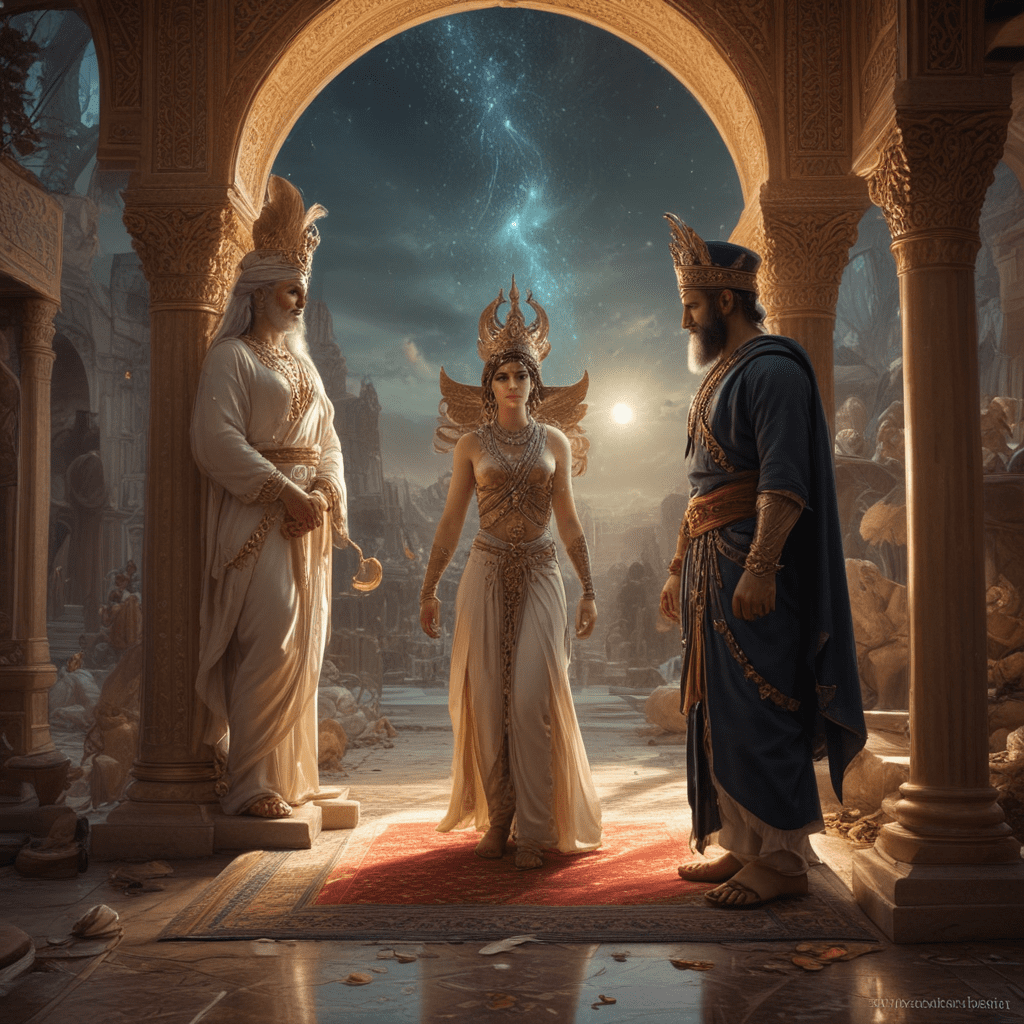The Symbolism of Birds in Slavic Mythology
1. The Eagle: A Symbol of Strength and Courage
In Slavic mythology, the eagle is a majestic creature associated with strength, courage, and power. It is often depicted as a guardian of the underworld, protecting the realm of the dead from outside forces. The eagle's keen eyesight and ability to soar high above the earth symbolize its ability to see beyond the mundane world and into the realms of the spirit.
2. The Raven: A Messenger of Death and Rebirth
The raven is a mysterious and enigmatic bird in Slavic mythology, often associated with both death and rebirth. It is said to be the messenger of the god of death, Velez, and its presence is often seen as a sign of impending doom. However, the raven is also a symbol of transformation and renewal, as it is believed to possess the ability to fly between the worlds of the living and the dead.
3. The Owl: A Guardian of the Night
The owl is a wise and watchful creature in Slavic mythology, associated with the night and the hidden realms. It is said to be a guardian of knowledge and secrets, and its presence is often seen as a sign of impending change or revelation. The owl's ability to see in the dark symbolizes its ability to penetrate the veil of illusion and perceive the truth.
4. The Stork: A Symbol of Fertility and New Beginnings
The stork is a revered bird in Slavic mythology, associated with fertility, new beginnings, and the promise of spring. It is said that the stork brings children to families, and its presence is often seen as a sign of good luck and prosperity. The stork's long legs and ability to migrate over vast distances symbolize its connection to both the earthly and celestial realms.
5. The Swan: A Symbol of Beauty, Grace, and Purity
The swan is a graceful and beautiful bird in Slavic mythology, associated with purity, innocence, and the divine feminine. It is said that the swan's feathers are made of pure gold, and its presence is often seen as a sign of hope and renewal. The swan's ability to swim effortlessly through the water symbolizes its ability to navigate the challenges of life with grace and ease.
6. The Rooster: A Symbol of Dawn and Vigilance
The rooster is a proud and vigilant bird in Slavic mythology, associated with the dawn and the rising sun. It is said to be a protector against evil spirits and a harbinger of new beginnings. The rooster's loud crowing is believed to chase away darkness and announce the coming of light.
7. The Cuckoo: A Symbol of Spring and Renewal
The cuckoo is a migratory bird in Slavic mythology, associated with spring and the renewal of life. Its arrival is seen as a sign that winter is coming to an end and that new growth is on the horizon. The cuckoo's distinctive call is believed to bring good luck and prosperity.
8. The Swallow: A Symbol of Hope and Prosperity
The swallow is a small and agile bird in Slavic mythology, associated with hope, prosperity, and the promise of new beginnings. It is said to bring good luck to homes where it nests, and its presence is often seen as a sign of happiness and contentment.
9. The Nightingale: A Symbol of Love and Music
The nightingale is a small and melodious bird in Slavic mythology, associated with love, music, and the beauty of nature. Its enchanting song is said to have the power to charm even the most hardened hearts. The nightingale is often depicted as a symbol of hope and renewal, as its song is believed to bring joy and happiness.
10. The Falcon: A Symbol of Speed and Agility
The falcon is a swift and powerful bird in Slavic mythology, associated with speed, agility, and the pursuit of success. It is often depicted as a symbol of courage and determination, as it is said to never give up on its prey. The falcon's keen eyesight and ability to soar high above the earth symbolize its ability to see the big picture and to achieve its goals.
Frequently Asked Questions (FAQs)
Q: What is the significance of birds in Slavic mythology?
A: Birds play a significant role in Slavic mythology, representing various aspects of life and the natural world. They are associated with strength, courage, death, rebirth, fertility, new beginnings, beauty, grace, purity, vigilance, hope, prosperity, love, music, speed, and agility.
Q: Which bird is considered the most powerful in Slavic mythology?
A: The eagle is considered the most powerful bird in Slavic mythology, symbolizing strength, courage, and power. It is often depicted as a guardian of the underworld, protecting the realm of the dead from outside forces.
Q: What does the raven symbolize in Slavic mythology?
A: The raven is a mysterious and enigmatic bird in Slavic mythology, associated with both death and rebirth. It is said to be the messenger of the god of death, Velez, and its presence is often seen as a sign of impending doom. However, the raven is also a symbol of transformation and renewal, as it is believed to possess the ability to fly between the worlds of the living and the dead.
Q: What is the significance of the stork in Slavic mythology?
A: The stork is a revered bird in Slavic mythology, associated with fertility, new beginnings, and the promise of spring. It is said that the stork brings children to families, and its presence is often seen as a sign of good luck and prosperity.



